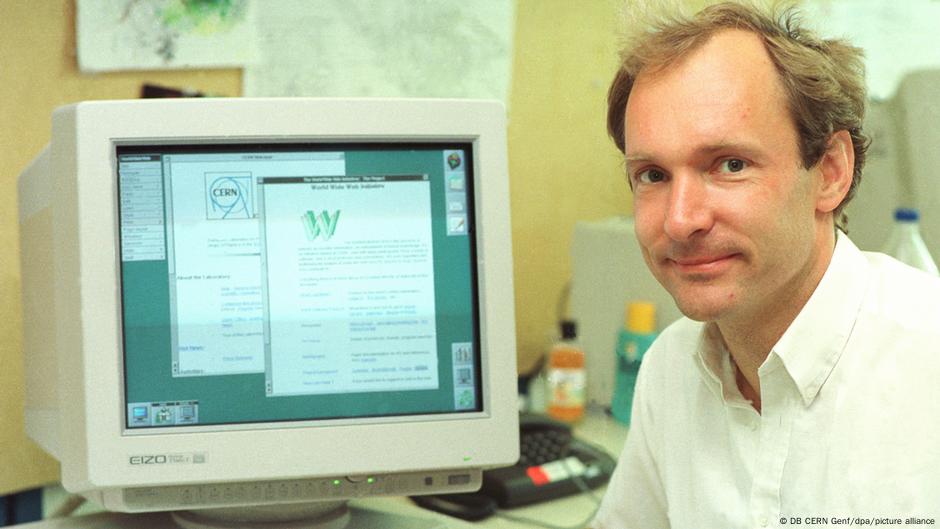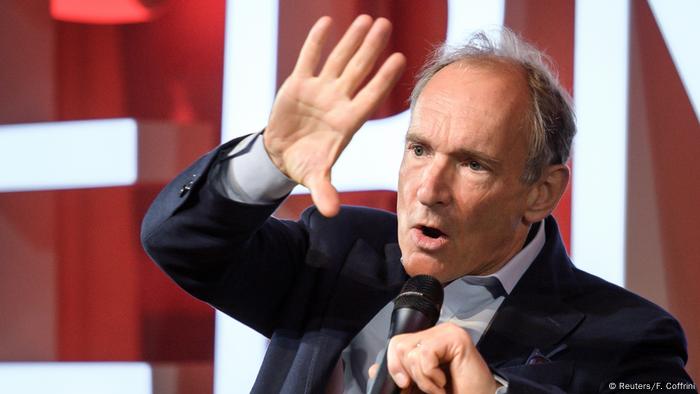1989 was a year of upheaval. One of them took place in the mind of Tim Berners-Lee. The physicist at the world-famous CERN research center in Geneva was disturbed by the notorious information chaos between the various institutes and the numerous working and project groups. As a solution, he came up with the idea of a digital information network through which scientists could exchange information. The then 34-year-old scientist wrote down the concept in brief. ‘Vague but exciting’ – “Vague but exciting,” his boss commented on the memo. Too vague apparently. Because nothing happened at first.
But Berners-Lee thought further, the individual components of the World Wide Web were formed: so-called URLs for web addresses, HTML to describe web pages, i.e. to be able to program them. The technical protocol HTTP for links had to work and finally a recipe for a web browser had to be found. Exactly 30 years ago, the world public was able to see the result: on April 30, 1993, the researchers at CERN brought it out World Wide Web on the way. Technologically little changed to this day, the triumph of the Internet began.
Brockhaus as a dust catcher on the shelf
Today you have to explain to your thirteen-year-old daughter that even at that age you knew neither the internet nor smartphones. Instead of downtown shopping sprees, online ordering is now just a few bits and whishes away. The tomes of Brockhaus are at best still on the shelf as dust collectors; one that is fundamentally open to everyone Wikipedia is the place to go for anyone who wants to quickly “pull” information about the revolution of 1789 or the invention of the internet. Anyone looking for an apartment no longer leafs through the third or thirteenth volume of daily newspapers, but finds advertisements in Internet portals in abundance that any paper would have overused.
Sometimes disorientation, or at least a flood of information, are the downsides of digital networking. In principle, all people can advertise and publish their views, ideas, products, goods and visions on the Internet – and this is the origin and idea of its function. Donald Trump is a good example. Among other things, the reach of his Twitter account gave him a loyal following, despite – or because of – a lot of misinformation.
Search engines such as Google or DuckDuckGo help to separate the wheat from the chaff in the seemingly endless field of information. However, at least behind the large digital corporations such as Google, Apple, Facebook, Amazon and Microsoft, there are global corporations that primarily pursue their profit interests. They profit by structuring the Internet. A thought that was alien to Tim Berners-Lee. He could have patented his World Wide Web technology, but deliberately chose not to. The pursuit of profit stood in the way of his ideal of a free exchange of information.
Next level AI
In any case, the next level within the Internet is just emerging, keyword: artificial intelligence (AI). ChatGPT only created a new basis for discussion here a few months ago. After 30 years of internet, does ChatGPT represent its future? “As an AI-based language model, I cannot say with certainty that ChatGPT is the future of the internet, as the future of the internet depends on many factors and is constantly changing. However, there are some characteristics of ChatGPT and similar AI models that have the potential to influence and transform the internet,” the software said of itself when asked by DW. However, it is important to note that AI models also bring with them ethical challenges, such as privacy, transparency and accountability.
This is where the potentially new level of the Internet leaves a lot to be desired. Because ChatGPT can generate coherent texts that sound coherent in terms of content, but the sources remain in the dark. Tim Berners-Lee was different 30 years ago. His first website had the somewhat cumbersome and technical address: http://info.cern.ch/hypertext/WWW/TheProject.html.
Sir Tim Berners-Lee
It contains – to this day – basic information about the World Wide Web: “The WorldWideWeb (W3) is a large-scale hypermedia information retrieval initiative aimed at providing universal access to a large universe of documents”, is there to read. Hypermedia comes from hypertext and means texts that have links, i.e. connections to other texts. This creates a data network without which today’s world could not function.
If you have any questions, you can go on a journey through time. On the world‘s first publicly accessible website there is still a link to the people involved in the project. There you will find Tim Berners-Lee, who has since been knighted. The then 34-year-old researcher had extension 3755 at CERN, e-mail: [email protected].
you will reach Sir Tim Berners-Lee probably no longer there. He is a professor at the Massachusetts Institute of Technology (MIT) and has held a chair at the University of Oxford since 2016. To this day, he heads the World Wide Web Consortium (W3C) he founded, the committee for standardizing technologies on the World Wide Web. This can be researched on the Internet with a few clicks or swipes on the smartphone.


